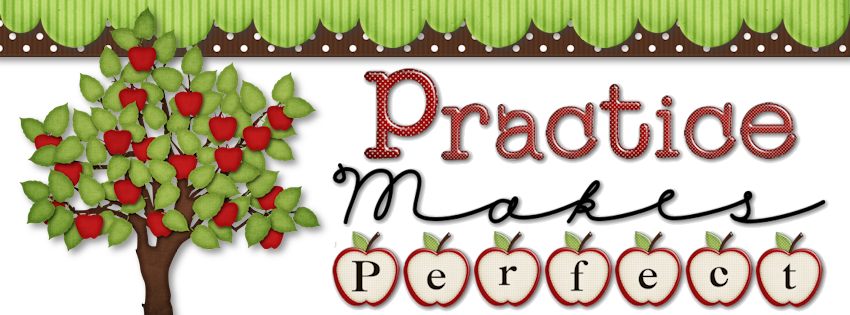 Then inspiration hit! Earlier this year, we had carpet squares donated to our classroom. We use them for all the normal stuff, like sitting on in the library or defining our space when we're sitting in a circle on the floor. As I was demonstrating our latest dice game to the kids, I thought, hey, I can use a carpet square to muffle the noise AND make it a rule that if your dice go off the carpet square, you lose your turn! Et voila! Like magic, in one moment of shear brilliance, I solved two problems at one time -- noisy dice and runaway dice -- without spending a penny! Now that is win-win in my book. We are now happily playing dice games on the floor again in a much quieter and less chasing-after-the-
Then inspiration hit! Earlier this year, we had carpet squares donated to our classroom. We use them for all the normal stuff, like sitting on in the library or defining our space when we're sitting in a circle on the floor. As I was demonstrating our latest dice game to the kids, I thought, hey, I can use a carpet square to muffle the noise AND make it a rule that if your dice go off the carpet square, you lose your turn! Et voila! Like magic, in one moment of shear brilliance, I solved two problems at one time -- noisy dice and runaway dice -- without spending a penny! Now that is win-win in my book. We are now happily playing dice games on the floor again in a much quieter and less chasing-after-the-dice classroom.
I'm pretty sure many of you have already thought of this solution to the dice problem, but in case you haven't, get yourself some carpet squares and breathe a sigh of relief.
Here are some videos I took of my class playing this St. Patrick's Day subtraction game. The children had to add the two dice and then subtract the total from 17. Some of my lower math group is still having trouble counting backwards, so this was a perfect game to practice that skill. In the first video, as I observed this young man counting backwards the first time, he skipped 13. I told him he was skipping 13, and directed him to the number line above our closets to help him count backwards. He said, "Oh, I'm skipping 13! No wonder I keep getting the wrong answer!" I checked back later to make sure he was counting backwards correctly, and he was!
And finally, I have some great end-of-the-year/summery resources to get you through those last few weeks of school, especially since so many of us have an extended school year this year due to snow days! Click the picture below to visit my end-of-the-year/summer selection.
Click the picture to view the video.
In this next short video, the girl, performs some mental math to come up with her answer. I was happy to see that she did not have to count all the dice to get her total to subtract. She just subitized. Yay!
Click the picture to view the video.
And in this last clip, one of my lower math students is very unsure of herself. You can hear the question in her voice as she tells me the answer. You can see she still counts all the dots to come up with her total to subtract from 17. This is something we've been working on all year with her, and she can do it if I give her one number dice and one dotted dice, but if there are dots on both dice, she is more comfortable counting them all. But she had made and continues to make a lot of progress since the beginning of the year.
Click the picture to view the video.
As I viewed these videos, what struck me was how one simple paper one pair of dice met the needs of so many different learners in my classroom. The game automatically differentiated itself with no effort on my part.
And on a final note, I am taking part in the big spring cleaning sale going on on TpT. All my products are 10% off until April 1st. Now would be a great time to get some great spring resources, like my Easter bundle,
click the picture to view all my religious resources
Do you use the Journey's reading series? I've been developing a series of supplemental workbooks that go along with each story. I've tried to make the activities the same or similar enough that the children will know exactly what to do on the page without having to read the directions because they've done it before. The feedback I'm getting on these is great, and many people have said that because I don't make the activities story specific, they are able to use the resource if they don't use the Journey's series. The workbooks are geared towards first grade, but they would make a good review for second grade or enrichment for kindergarten. The next lesson, Tomas Rivera, will be ready to post hopefully this evening, but tomorrow night at the latest.
click the picture to view all my first grade skill workbook resources
If you are looking for spring and Earth Day resource, click the picture below to visit my store to see what I have.
And finally, I have some great end-of-the-year/summery resources to get you through those last few weeks of school, especially since so many of us have an extended school year this year due to snow days! Click the picture below to visit my end-of-the-year/summer selection.
So that's it for today! Have a great weekend everyone!
























